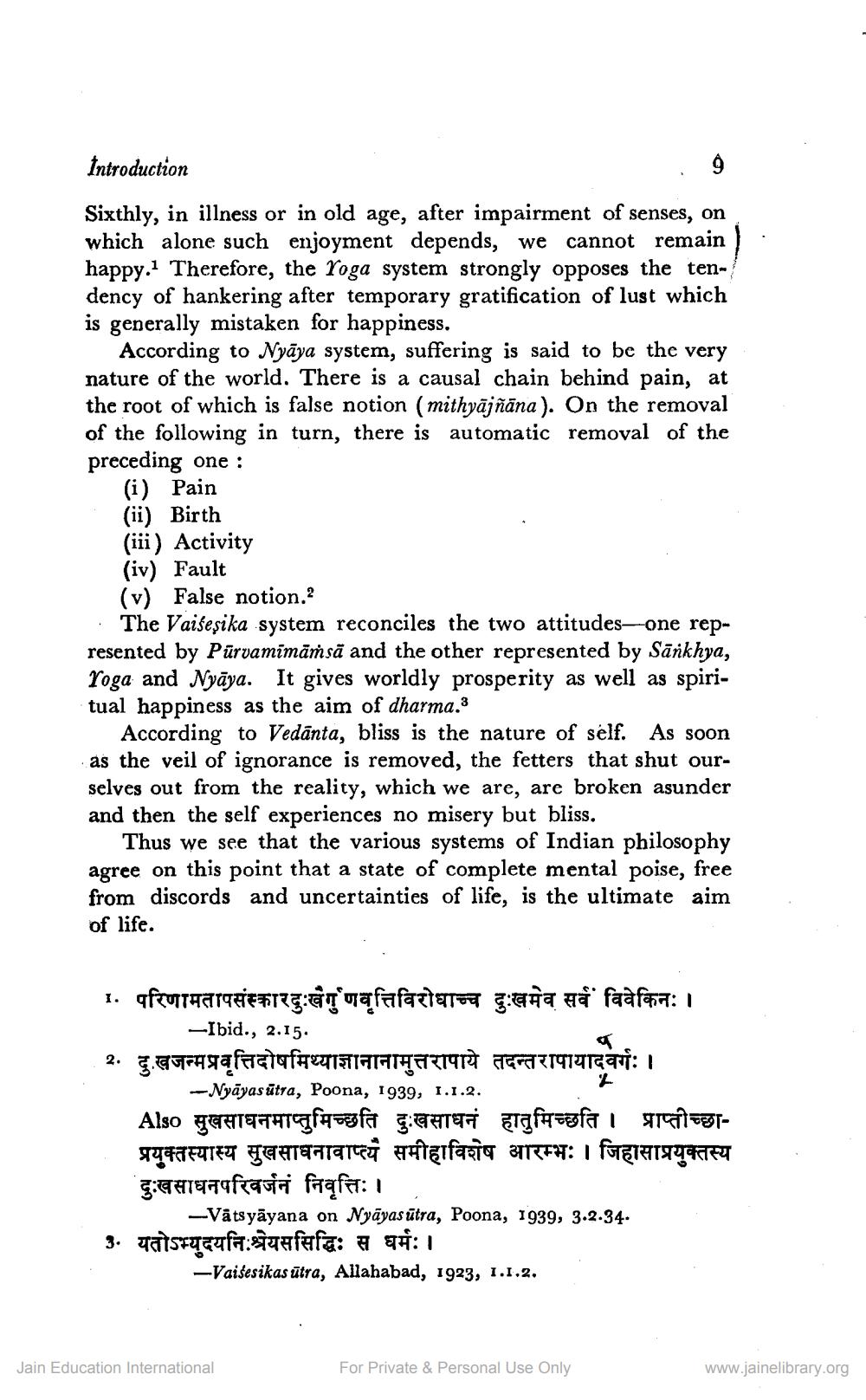________________
Introduction
9
Sixthly, in illness or in old age, after impairment of senses, on which alone such enjoyment depends, we cannot remain happy.1 Therefore, the Yoga system strongly opposes the tendency of hankering after temporary gratification of lust which is generally mistaken for happiness.
According to Nyaya system, suffering is said to be the very nature of the world. There is a causal chain behind pain, at the root of which is false notion (mithyājñāna). On the removal of the following in turn, there is automatic removal of the preceding one :
(i) Pain
(ii) Birth
(iii) Activity (iv) Fault
(v) False notion.2
The Vaiseşika system reconciles the two attitudes-one represented by Purvamīmāṁsā and the other represented by Sankhya, Yoga and Nyaya. It gives worldly prosperity as well as spiritual happiness as the aim of dharma.3
According to Vedanta, bliss is the nature of self. As soon as the veil of ignorance is removed, the fetters that shut ourselves out from the reality, which we are, are broken asunder and then the self experiences no misery but bliss.
Thus we see that the various systems of Indian philosophy agree on this point that a state of complete mental poise, free from discords and uncertainties of life, is the ultimate aim of life.
I.
9fc91192198=173:g'oqfafazìara g:aña aå' faàfmn: 1
-Ibid., 2.15.
ག
2.
दु. खजन्मप्रवृत्तिदोषमिथ्याज्ञानानामुत्तरापाये तदन्तरापायादवर्गः ।
L
-Nyayasutra, Poona, 1939, 1.1.2.
Also सुखसाधनमाप्तुमिच्छति दुःखसाधनं हातुमिच्छति । प्राप्तीच्छाप्रयुक्तस्यास्य सुखसाघनावाप्त्यं समीहाविशेष आरम्भः । जिहासाप्रयुक्तस्य दुःखसाधन परिवर्जनं निवृत्तिः ।
-Vatsyāyana on Nyayasutra, Poona, 1939, 3.2.34.
3. यतोऽभ्युदयनिःश्रेयससिद्धिः स धर्मः ।
-Vaisesikas ātra, Allahabad, 1923, 1.1.2.
Jain Education International
For Private & Personal Use Only
www.jainelibrary.org




